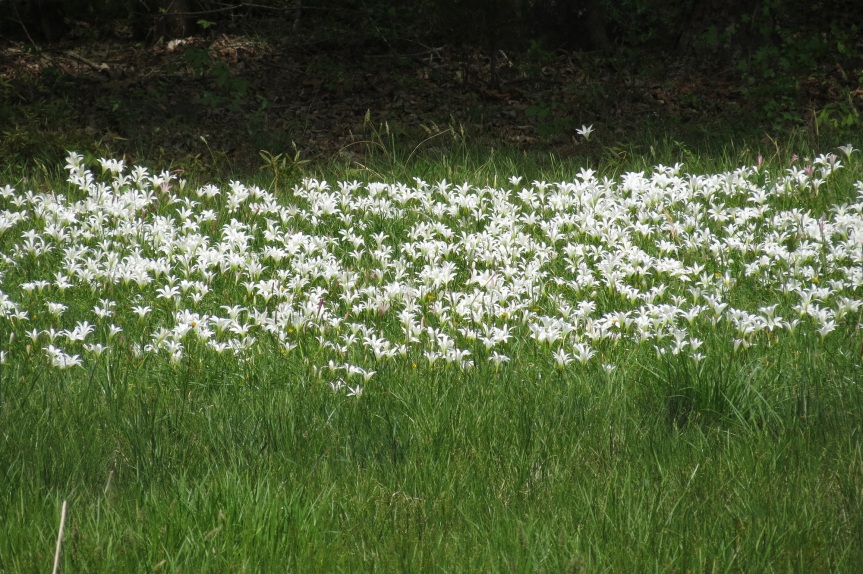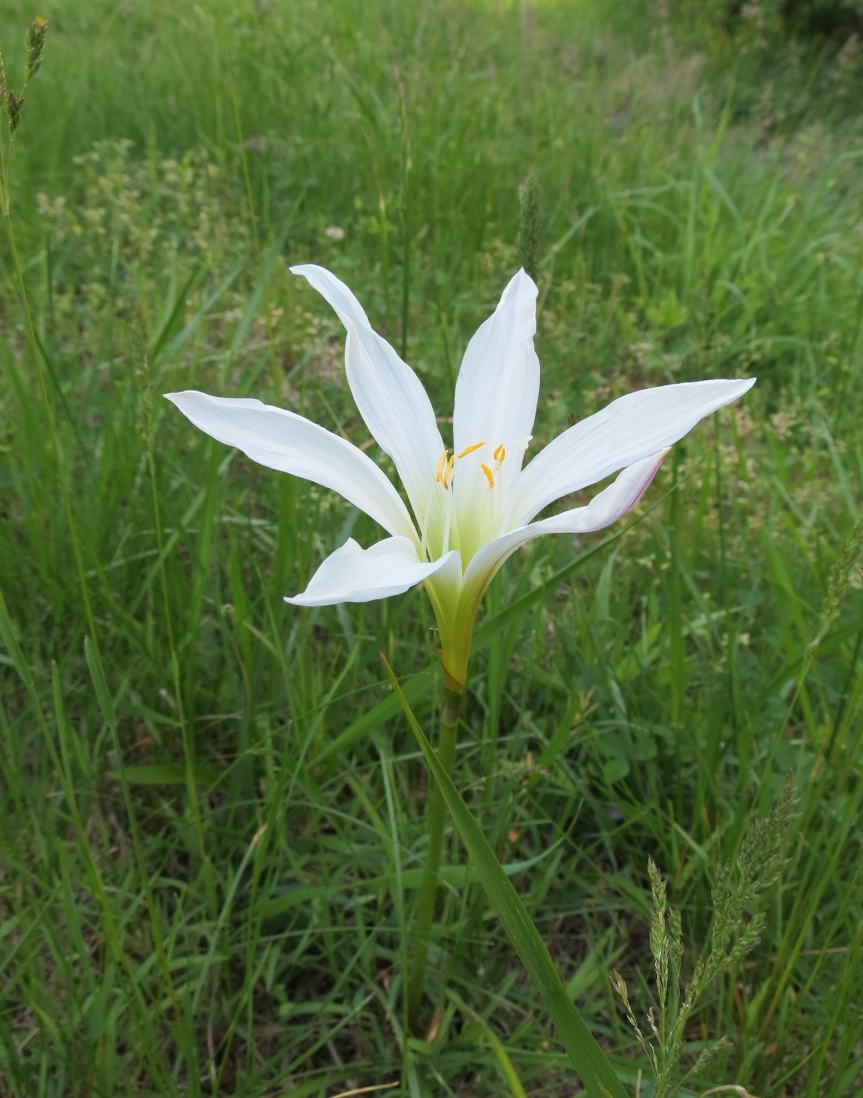
Now is the season for Atamasco lily, Zephyranthes atamasco, to bloom in the central NC piedmont. The thin, grassy leaves are often lost among true grasses, so the surprisingly large flowers (~8 or 9 cm wide) seem to appear from nowhere. Z. atamasco likes wet soil while in growth and can be found in moist deciduous woods, roadside ditches, and boggy meadows. In the woods, the plants produce their foliage while the trees are bare and bloom just as the canopy fills in, but they flower best in the open where they get more light. The plants below are in a meadow that I frequently drive past.

They’re on private land, so I stood on the road and took pictures with a telephoto lens this afternoon.

Once upon a time, Zephyranthes atamasco was a common lawn flower, but more frequent mowing and the use of herbicides to control weeds has reduced its frequency. In our neighborhood, there’s one house with a lawn that isn’t mowed often. Currently, it is snowy white with the flowers of bluets (Houstonia caerulea) and atamasco lilies. It’s quite a sight. Elsewhere in the neighborhood, plants bloom in the long grass at the side of the road:

In nature, Z. atamasco grows in the coastal plain and piedmont from extreme southeastern Maryland and Virginia, south to northern Florida and west to Mississippi. It could almost certainly be grown north and west of its natural range if the bulbs are protected from freezing.
Z. atamasco can be be obtained from various native plant nurseries, and seed is sometimes available from the North Carolina Botanical Garden Seed Program. In the garden, Z. atamasco produces new leaves in late winter and wants plenty of water while growing. It will go dormant if the soil dries out in the heat of summer but grows best with consistent moisture. A couple of plants that I grow in large pots sitting in a tray of water retain their leaves much longer than the plants in the ground, and they occasionally flower again in autumn.
Other Zephyranthes species are found from the Southern U.S. through central and South America as far south as Argentina. Together with their close relatives in the genus Habranthus, the tropical and subtropical Zephyranthes are collectively known as rain lilies, because they bloom intermittently, usually after a thunderstorm. A wide range of species and hybrids are hardy in zone 7 and may actually be easier than Z. atamasco to grow in regular garden soil. In my garden, I grow Zephyranthes grandiflora (pink flowers, Mexico and central America), Z. flavissima (yellow, southern Brazil to Argentina), Z. candida (white, Argentina and Uruguay), Z. smallii (yellow, Texas), and Habranthus tubispathus var. texensis (orange, Texas).
For further details on rain lilies, see the very informative wiki of the Pacific Bulb society.



One thought on “Flowers of the west wind”